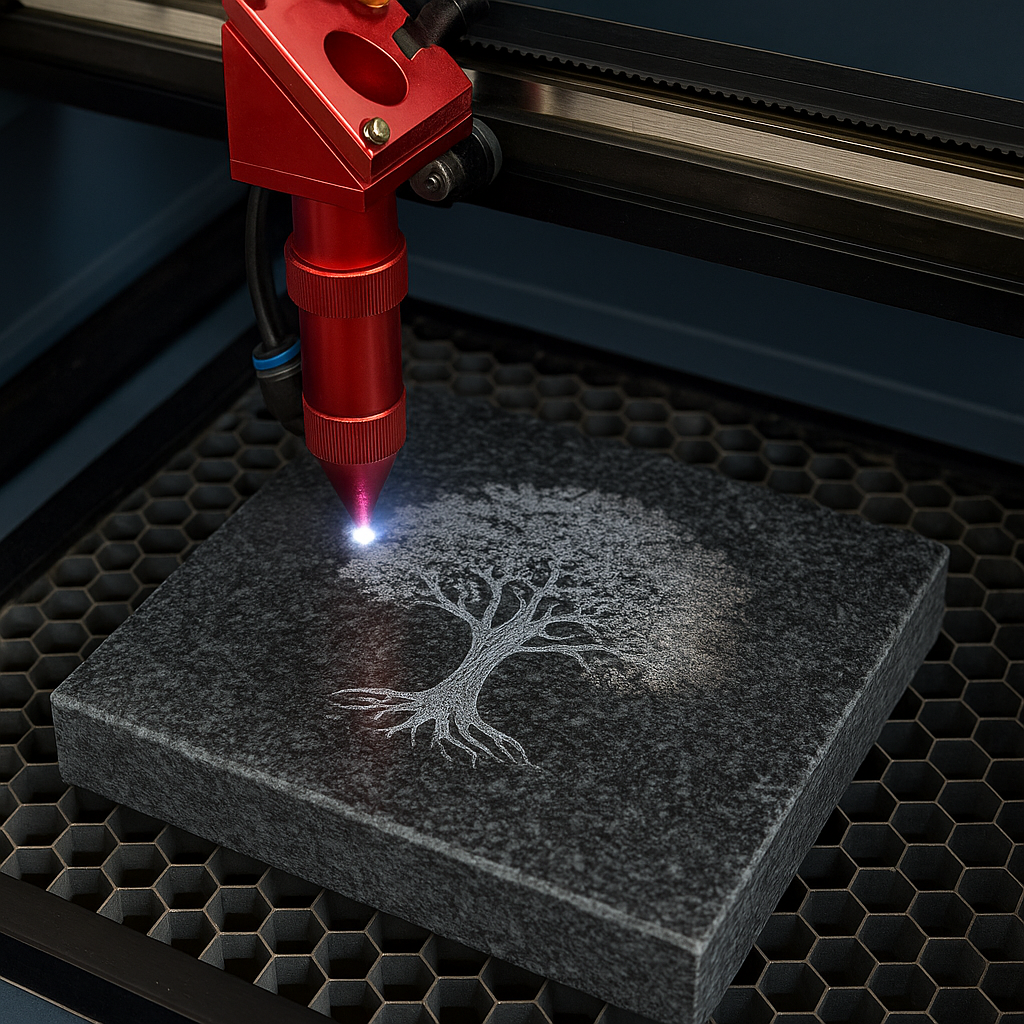
How Long Does Laser Engraving Last on Granite?
Ever wonder if granite engravings outlast your Wi-Fi router’s lifespan? The short answer: laser engravings on granite can last decades—even centuries with care. Thanks to Laser Engravers for Stone, designs stay crisp and meaningful. Keep reading to uncover what affects durability, smart care tips, and why granite is the ultimate memory keeper.

How Long Does Laser Engraving Last on Granite?
Durability of Engravings on Granite vs Other Stones
Why granite engravings are permanent
Granite has been the go-to stone for monuments and architecture for thousands of years — and for good reason. It’s dense, hard, and resistant to both weather and wear. When a laser engraver cuts into granite, it doesn’t just scratch the surface like a pen on paper. It burns away the polished top layer, leaving a permanent mark etched into the mineral structure itself.
That’s why granite headstones from a century ago can still be read today, even after decades of rain, snow, and sun. Unlike ink, paint, or coatings, which fade or peel, engravings in granite remain as part of the stone. With proper technique, a granite engraving isn’t just decorative — it’s practically forever.
Comparison with softer stones
Now, softer stones like limestone or soapstone tell a different story. They engrave beautifully with far less power, making them great for practice or indoor décor. But outside, they start to show wear quickly. Moisture seeps in, frost expands cracks, and pollution can eat away at the detail.
Granite, by contrast, laughs in the face of weather. Even acidic rain or blistering sun barely touch it. That’s why monuments made from granite remain crisp for centuries, while softer stones round off, blur, or even crumble. If durability is the goal, granite wins hands down.

Factors Affecting Longevity
Depth of engraving
Think of engraving depth like carving initials into wood. A light scratch might vanish with sanding, but a deep cut remains long after. The same principle applies to granite. Shallow engravings might look bold at first but lose their clarity over time, especially outdoors.
Deeper cuts create contrast and shadow that last much longer. They don’t rely solely on the polished surface for definition. This is why professional engravers often recommend going a little deeper than you think you’ll need — it’s an insurance policy against decades of erosion.
Outdoor vs indoor exposure
The environment plays a massive role in how long engravings last. Indoors, granite designs can remain virtually unchanged for generations. Picture a decorative granite plaque on a fireplace mantle — it’s shielded from weather, so it’ll look brand new even after decades.
Outdoors is another story. Constant cycles of heat, cold, moisture, and sunlight slowly wear at any surface. Granite is exceptionally resilient, but over the course of decades, even granite engravings will soften a bit. That’s why outdoor monuments may need occasional touch-ups, while indoor pieces rarely do.
Finish and polish of stone
The finish of granite adds another layer to the equation. A high-gloss polish looks beautiful and helps designs stand out with crisp contrast. The downside? Outdoors, that shine dulls over time, and the engraving can lose some of its “pop.”
A matte or honed finish may not gleam in the sun, but it’s more forgiving. It hides weathering and still showcases engravings clearly even as the years pass. Choosing between polish and honed is often a matter of aesthetics versus practicality. Do you want maximum shine now, or steady clarity for decades to come?

Is it Hard to Engrave Stones vs Metals or Wood?
Durability vs effort tradeoff
Engraving granite isn’t easy — and that’s exactly why it lasts so long. Wood can scorch with too much heat, and metals can oxidize or tarnish. Granite, though, requires real power and precision to engrave. The stone’s hardness means laser engravers often use slower speeds, multiple passes, and careful calibration.
The payoff is worth the effort. Once the design is etched, it doesn’t fade, peel, or rust. That’s why granite is the choice for headstones, memorials, and long-term architectural details. It’s harder to work with than softer materials, but the tradeoff is durability that can outlive the engraver themselves.
Think of it this way: engraving granite is like running a marathon versus a sprint. It takes more endurance and preparation, but once it’s done, the result lasts far longer than the quick wins you get with softer materials.
How to Protect & Maintain Engravings
Sealants and coatings
Granite doesn’t require sealants to remain durable, but adding one can help preserve contrast and keep the surface looking fresh. Sealants repel water, oil, and dirt, making it easier to clean and slowing the dulling process caused by outdoor weather.
For outdoor engravings, especially monuments or decorative slabs, resealing every few years is a smart habit. It’s like waxing a car — not essential to keep it running, but it makes it look better and last longer.
Cleaning methods to preserve clarity
Granite is tough, but it deserves gentle care. Cleaning should be simple: warm water, a few drops of mild detergent, and a soft cloth or sponge. This keeps dirt, algae, and buildup from obscuring the design.
Avoid harsh cleaners or abrasive pads. Bleach, vinegar, or ammonia can etch into the surface and dull the engraving. Steel wool or stiff brushes can scratch the finish. A little patience and gentleness go a long way in keeping the engraving sharp and vibrant for years.
You May Also Like:



Leave a comment